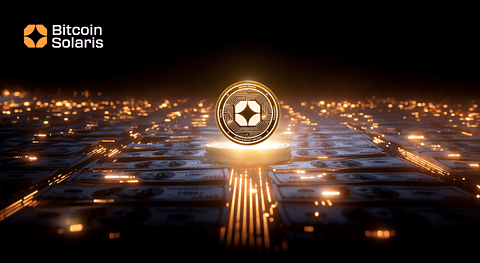Cryptocurrency Market Volatility and the Emergence of Bitcoin Solaris
The cryptocurrency market has historically been marked by significant volatility, with numerous assets experiencing rapid growth followed by sharp declines. Many of these assets have failed to sustain themselves due to a lack of robust infrastructure. For investors looking beyond short-term gains, the survivability of a cryptocurrency project depends on its architectural design, distribution model, and real-world scalability.
In this context, Bitcoin Solaris is emerging as a promising opportunity. With its capability to process over 10,000 transactions per second (TPS), a mobile-first mining platform, and a presale offering with fixed pricing before launch, it is positioned as a protocol designed for long-term wealth creation rather than speculative gain. Unlike many cryptocurrencies that rely on social momentum, Bitcoin Solaris offers participation that scales with actual usage.
Technical Design Focused on Speed, Scale, and Accessibility
Bitcoin Solaris operates on a dual-layer blockchain architecture that separates ledger security from execution logic. The Base Layer uses a combination of Proof-of-Stake (PoS) and Proof-of-Capacity (PoC) to validate blocks efficiently. Meanwhile, the Solaris Layer leverages Proof-of-History (PoH) and Proof-of-Time (PoT) to execute mobile mining and smart contracts. This system enables 10,000+ TPS with 2-second finality, making it comparable to high-performance networks like Solana. Importantly, it features a decentralized reward model designed for everyday users.

The infrastructure of Bitcoin Solaris is designed to support global-scale participation without relying on centralized validators or off-chain scaling solutions. Its performance capabilities are already integrated and have been confirmed through audits.
Nova App Mining and User-Level Rewards
At the core of Bitcoin Solaris is the Nova App, which allows users to mine BTC-S directly from their smartphones. By dedicating 1–5 GB of storage and utilizing idle CPU, participants can earn daily rewards based on their device’s uptime. The mining process occurs passively, particularly during periods like overnight charging, thereby removing barriers related to technical expertise or hardware investment.
Unlike most cryptocurrency networks where benefits primarily accrue to validators or developers, Bitcoin Solaris redirects value creation to users who contribute real computing resources. This approach revives the early economic model of Bitcoin, enhanced with modern accessibility features.
Audited Infrastructure and Transparent Governance
Bitcoin Solaris has undergone comprehensive third-party audits and verification processes. The Cyberscope audit validated the token mechanics and smart contract behavior, while the Freshcoins audit assessed the scalability and performance of mobile mining. Additionally, KYC verification has been completed to ensure governance integrity and team transparency.
These reviews collectively affirm that Bitcoin Solaris operates based on predefined rules rather than discretionary controls, thereby ensuring long-term user trust and protocol resilience.
Strategic Entry Before Scaling Pressure
Bitcoin Solaris is currently in Presale Phase 4, offering BTC-S at 4 USDT, with a listing price set at 20 USDT. This represents a potential 5X return for early participants. Out of the fixed 21 million BTC-S supply, 4.2 million (20%) is allocated to the presale. As the Nova App mining launches and public demand increases, both token availability and network mining conditions are expected to shift rapidly.
Participating in the presale provides users with a clear first-mover advantage, not only in terms of price but also in network positioning before difficulty adjustments potentially tighten rewards. For those who missed the early mining phase of Bitcoin, BTC-S offers a comparable structural entry point.
Crypto Volt recently highlighted why Bitcoin Solaris differs from typical ‘bubble tokens.’ The analysis pointed out that its 10,000 TPS capability, audited tokenomics, and mobile mining model provide a foundation for wealth generation rooted in actual participation rather than speculation.
While cryptocurrency bubbles often capture headlines, they rarely create sustainable value. Bitcoin Solaris presents a different proposition: a fast, scalable network with a fixed supply, mobile-first participation, and verifiable infrastructure. Currently in Presale Phase 4 at 4 USDT, with a launch price of 20 USDT, BTC-S offers early users direct access to protocol rewards before its global rollout. For investors seeking long-term exposure grounded in architecture rather than hype, this may represent one of the most strategically timed opportunities of the 2025 cycle.


